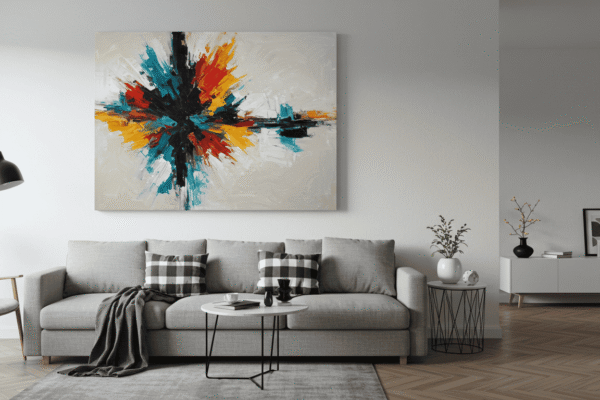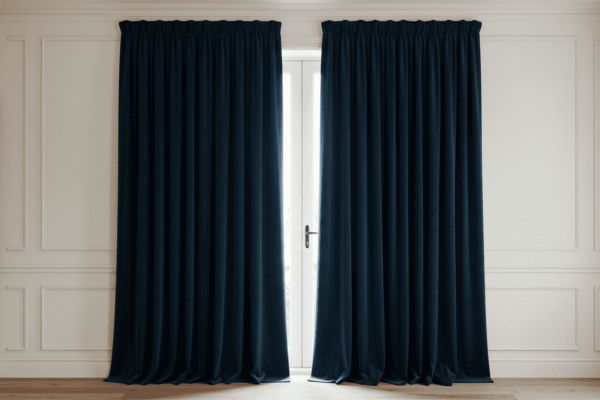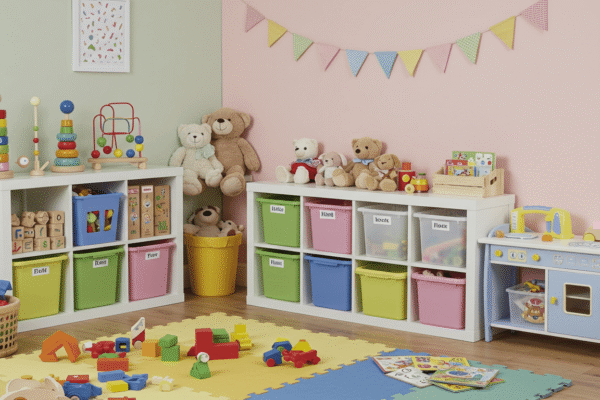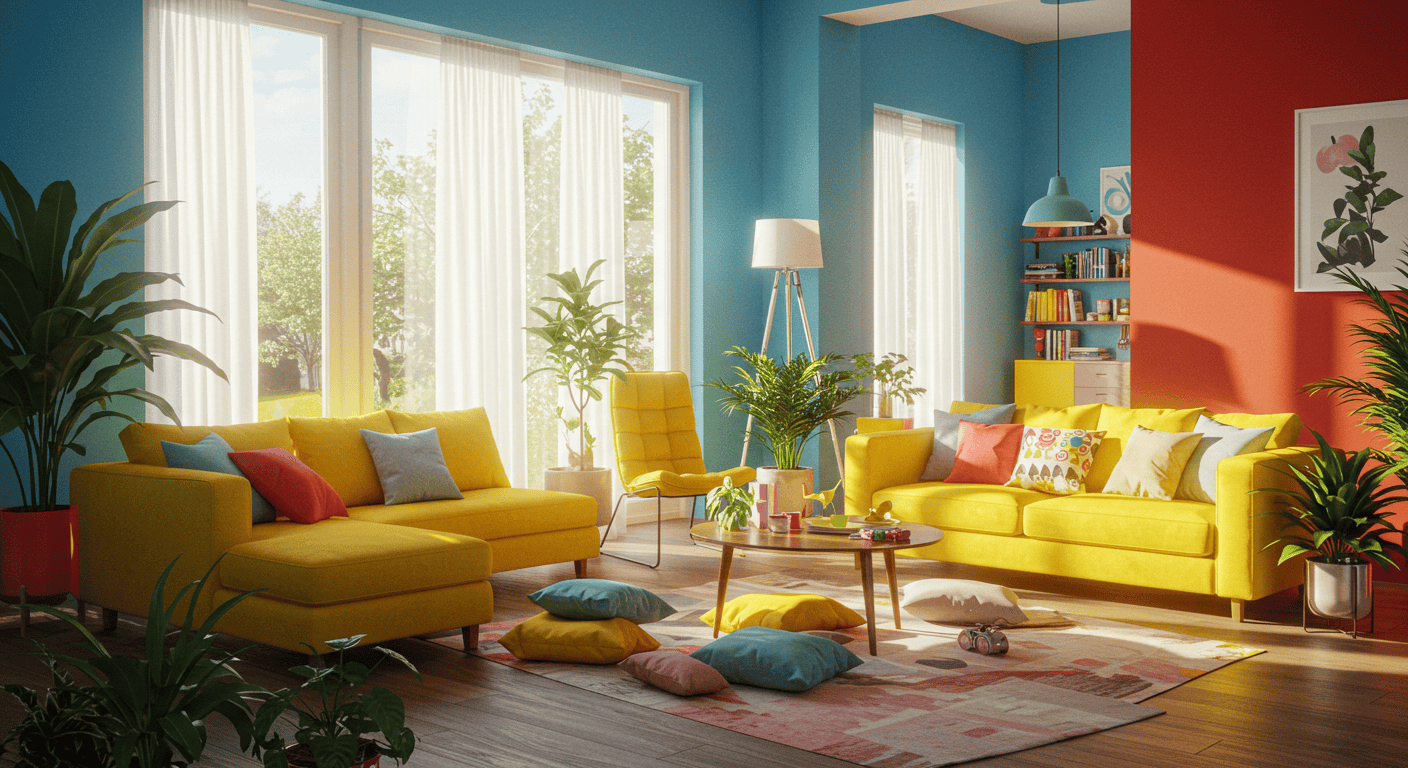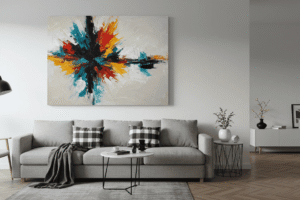Color-drenched rooms are more than just a bold decorating choice—they’re a way to immerse your home in personality, mood, and style. By embracing tone-on-tone decorating, you can create spaces that feel cohesive, layered, and visually captivating without overwhelming the senses. From subtle variations of a single hue to carefully layered shades across walls, furniture, and accessories, these rooms offer endless possibilities for those who love monochrome room ideas and vibrant color interior design. In this guide, we’ll explore practical tips, palette ideas, and creative strategies to help you transform your home into a haven of harmonious color combinations.
Introduction to Color-Drenched Rooms
Transforming a space into a visually striking and harmonious environment starts with understanding the concept of color-drenched rooms. These spaces are designed to immerse the eye in a thoughtfully chosen color palette, creating a sense of unity and style that can make any room feel intentional and curated. Unlike random bursts of color or mismatched decor, a color-drenched room focuses on layering tones and shades of a single color, offering both versatility and sophistication. Whether you want to make a bold statement or cultivate a calm retreat, understanding the principles behind these rooms is the first step toward achieving a striking interior design.
What Are Color-Drenched Rooms?
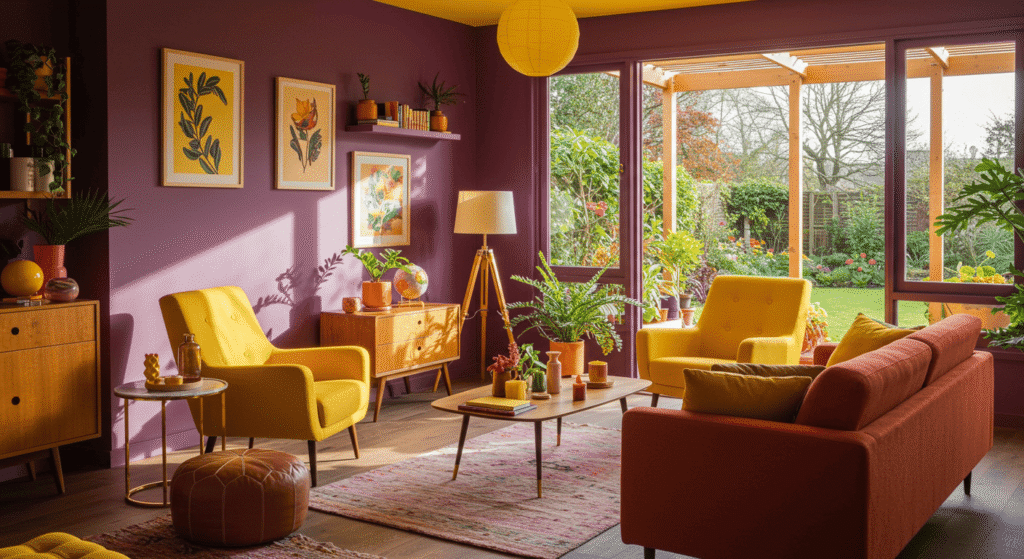
Color-drenched rooms are spaces where a single color or a harmonious range of shades dominates the walls, furniture, and accessories. The goal is to create an immersive environment where the eye naturally experiences cohesion and flow. This design approach differs significantly from simply using bold, contrasting colors. While bold colors grab attention with high contrast, tone-on-tone decorating emphasizes subtle shifts in hue, saturation, and lightness, resulting in a layered, visually rich atmosphere. By carefully selecting and combining lighter and darker variations of the same color, you can create depth, interest, and elegance without overwhelming the senses.
Why Tone-on-Tone Works
The magic of tone-on-tone decorating lies in its ability to add dimension and sophistication to a space while maintaining visual harmony. Instead of relying on multiple contrasting colors, tone-on-tone designs work by varying shades within a single color family. This approach creates rooms that feel cohesive yet dynamic, allowing furniture, textures, and decorative accents to shine without clashing.
From a psychological perspective, cohesive color schemes have a strong impact on mood and perception. Softer tones can make a space feel calm and inviting, ideal for bedrooms or reading nooks, while slightly bolder shades can energize areas like kitchens or home offices. Even in living rooms or dining areas, color-drenched rooms designed with tone-on-tone principles can balance warmth and sophistication, creating a sense of comfort that feels natural and intentional.
Choosing the Perfect Palette
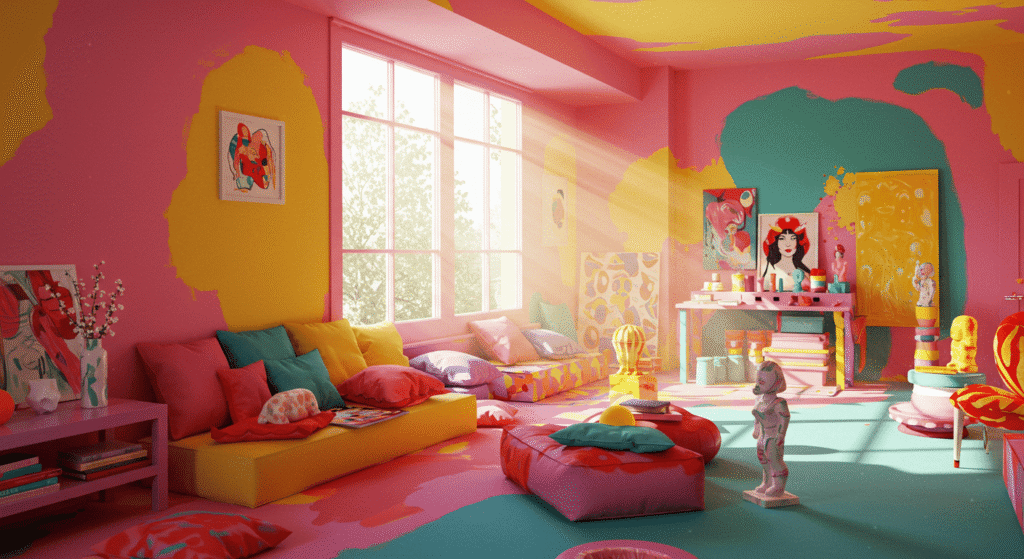
Selecting the right palette is one of the most important steps in creating color-drenched rooms. The colors you choose set the tone for the entire space, influencing mood, perception of size, and the overall atmosphere. By carefully considering tone-on-tone decorating principles and understanding the properties of color, you can craft a harmonious and visually appealing environment.
Understanding Hue, Saturation, and Lightness
To master tone-on-tone decorating, it helps to understand the HSL (Hue, Saturation, Lightness) system. Hue refers to the base color, such as blue, green, or terracotta. Saturation indicates the intensity or purity of the color, from muted to vibrant. Lightness controls how light or dark the color appears. By adjusting these three elements, you can create layered shades within a single color family, adding depth and interest without introducing multiple contrasting hues.
Using HSL effectively allows you to experiment with lighter tones for walls, medium tones for furniture, and darker tones for accent pieces, ensuring that your color-drenched room feels balanced and sophisticated.
Table: Sample Tone-on-Tone Palettes for Each Room
| Room Type | Base Color | Lighter Shades | Darker Shades | Accent Suggestion |
|---|---|---|---|---|
| Living Room | Blue | Sky Blue | Navy | Soft Grey |
| Bedroom | Green | Mint | Forest Green | Cream |
| Dining Room | Terracotta | Peach | Rust | Beige |
| Home Office | Grey | Silver | Charcoal | Dusty Blue |
Tip: How to Pick the Palette Based on Room Function and Lighting
When choosing a palette for color-drenched rooms, consider how the space will be used and the type of lighting it receives. For rooms designed for relaxation, such as bedrooms or reading areas, softer tones can promote calm and comfort. Spaces where energy and focus are needed, like home offices or kitchens, benefit from slightly more vibrant shades. Additionally, natural light can make colors appear brighter or more muted, so it’s essential to test samples in different lighting conditions before committing to the final palette.
Layering Tones for Maximum Impact
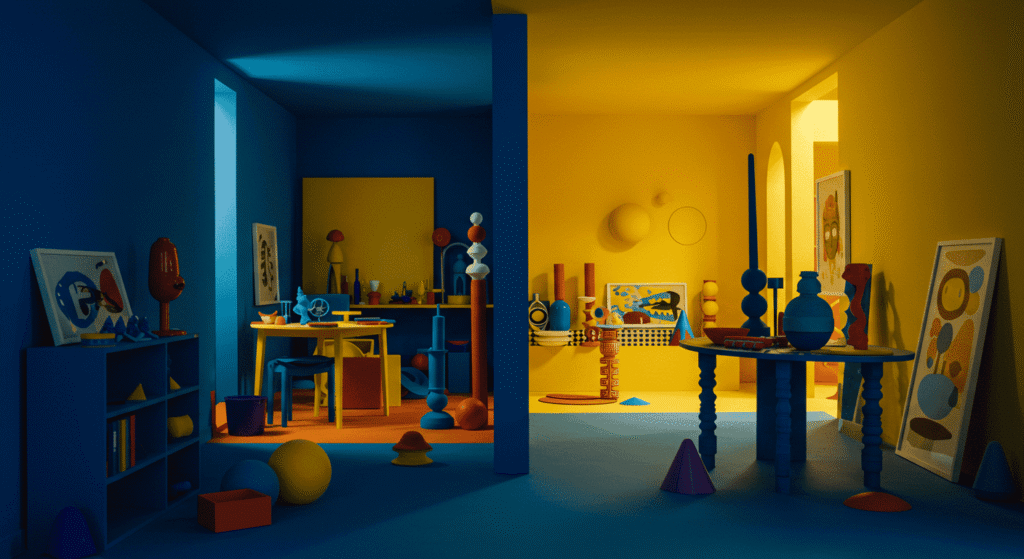
Creating depth and visual interest in color-drenched rooms goes beyond selecting a palette—it requires thoughtful layering of tones across walls, furniture, and accessories. By varying shades within a single color family, you can design a space that feels dynamic, sophisticated, and harmonious without overwhelming the senses. Tone-on-tone decorating allows you to play with light, medium, and dark shades strategically to guide the eye and highlight key elements in the room.
Walls, Furniture, and Accessories
The key to effective layering is assigning different shades to specific elements. Lighter tones can make walls feel open and airy, medium tones work well for larger furniture pieces like sofas or cabinets, and darker shades create grounding accents in smaller areas such as cushions, rugs, or decorative objects. This approach ensures that each layer complements the others while maintaining a cohesive overall look.
Table: Layering Example for a Living Room
| Element | Light Tone | Medium Tone | Dark Tone |
|---|---|---|---|
| Walls | Sky Blue | Steel Blue | Navy |
| Sofa / Chairs | Light Grey | Soft Blue | Deep Blue |
| Decor / Rugs | White / Cream | Blue Patterns | Dark Accents |
Tip: Avoid overwhelming a room by balancing darker shades with lighter ones in smaller areas
When designing color-drenched rooms, it’s easy to let darker tones dominate and make the space feel heavy. To prevent this, use dark shades sparingly—on accent walls, small furniture pieces, or decorative elements—and offset them with lighter tones on larger surfaces like walls or upholstery. This balance creates visual interest while keeping the room feeling open, airy, and inviting.
Creating Depth Without Contrast Overload
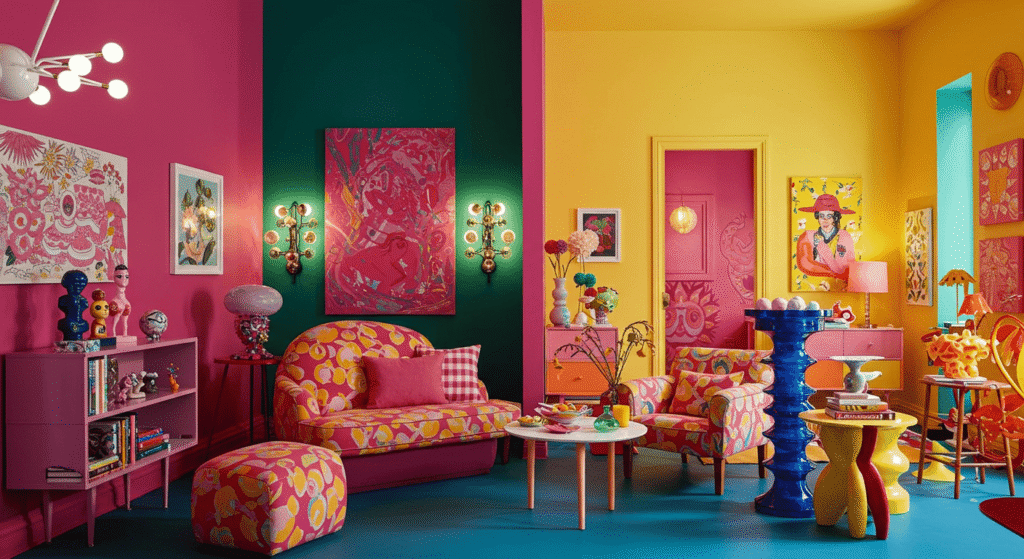
One of the challenges in designing color-drenched rooms is adding visual interest without creating harsh contrasts that disrupt the harmony. By combining tone-on-tone decorating with textures and subtle patterns, you can achieve depth and dimension while keeping the space cohesive and inviting.
Using Texture to Differentiate Tones
Texture plays a crucial role in distinguishing shades within a single color palette. For example, matte walls can provide a soft, understated background, while velvet furniture adds richness and depth. Wooden surfaces introduce warmth, and different finishes can make medium or dark tones stand out without adding additional colors. Using texture strategically ensures that each shade in your color-drenched room feels purposeful and visually layered.
Subtle Patterns and Layering
In addition to texture, incorporating tonal patterns can enhance the complexity of a room without breaking the monochromatic scheme. Patterns like stripes, chevrons, or geometric shapes add movement and interest while remaining in the same color family. Layering these patterns through rugs, cushions, or wallpaper allows for creativity and sophistication, giving the room a dynamic yet cohesive feel.
Table: Texture Ideas by Room
| Room | Wall Texture | Furniture Texture | Accessory Texture |
|---|---|---|---|
| Bedroom | Matte | Linen / Cotton | Wool / Leather |
| Living Room | Satin | Velvet / Soft Fabric | Wood / Ceramic |
| Office | Smooth / Matte | Leather / Wood | Metal / Glass |
Choosing Accent Colors Wisely
While color-drenched rooms rely on a cohesive single-color palette, carefully selected accent colors can add personality, energy, and visual interest without disrupting the harmony. Using tone-on-tone decorating as a foundation, introducing secondary colors strategically allows you to highlight features, draw attention to focal points, and balance the overall mood of the room.
When to Introduce a Secondary Color
The key to using secondary colors in color-drenched rooms is subtlety and purpose. Introduce complementary accents through smaller decor items such as cushions, rugs, artwork, or decorative objects. Subtle accents enhance the depth of a monochromatic space, while bolder accents can create focal points that energize a room. The goal is to maintain harmony while adding a touch of contrast that feels intentional rather than overwhelming.
Table: Accent Color Suggestions
| Base Color Palette | Subtle Accent | Bold Accent |
|---|---|---|
| Blue Shades | Soft Grey | Mustard |
| Green Shades | Cream | Burnt Orange |
| Terracotta Shades | Beige | Deep Teal |
| Grey Shades | Dusty Rose | Emerald |
Lighting and Its Role in Color-Drenched Rooms
Proper lighting is essential in color-drenched rooms, as it can dramatically influence how tones are perceived and how the overall atmosphere feels. Even the most carefully selected tone-on-tone decorating palette can look different depending on the type, intensity, and direction of light. Understanding how natural and artificial lighting interacts with your chosen colors ensures your space looks balanced and inviting at all times of day.
Natural vs. Artificial Light
Natural sunlight can enhance the vibrancy of lighter tones or soften darker shades, making walls, furniture, and accessories appear differently throughout the day. South-facing rooms often receive bright, direct light that can make colors pop, while north-facing rooms might benefit from warmer artificial light to maintain coziness.
Artificial lighting allows you to fine-tune the mood of a room. Warm lights can create a relaxing and inviting atmosphere, ideal for bedrooms or living areas, while cooler lights can energize spaces like home offices or kitchens. Layering different light sources, such as overhead lighting, floor lamps, and wall sconces, ensures each tone in your color-drenched room is seen at its best.
Table: Light Recommendations by Room Type
| Room | Morning Light | Evening Light | Recommended Fixtures |
|---|---|---|---|
| Bedroom | Soft / Warm | Warm | Wall Sconces |
| Living Room | Bright / Cool | Warm | Floor Lamps |
| Office | Bright / Cool | Neutral | Desk Lamps |
Common Mistakes to Avoid
Even with the best intentions, designing color-drenched rooms can sometimes go wrong if key principles are overlooked. By understanding common pitfalls in tone-on-tone decorating, you can create a space that feels balanced, inviting, and visually appealing.
Overdoing a Single Tone
One of the most frequent mistakes is using a single color excessively. While color-drenched rooms rely on cohesive palettes, applying dark or bold tones uniformly can make a space feel heavy or monotonous. Following the 60-30-10 rule can help: 60% dominant color (walls), 30% secondary color (furniture), and 10% accent color (decor). This ensures the room maintains depth and harmony without becoming overwhelming.
Ignoring Room Function
Another common error is overlooking how a room will be used. Colors can influence mood and productivity, so it’s essential to match tones to the room’s purpose. Soft, muted shades are ideal for bedrooms or relaxation spaces, while energizing or vibrant tones can enhance focus in home offices or kitchens. Failing to consider room function can result in a space that feels mismatched or uncomfortable.
Table: Tone-on-Tone Pitfalls and Fixes
| Mistake | How to Fix |
|---|---|
| All walls dark | Introduce lighter furniture or decor |
| Too many patterns | Stick to one patterned item per room |
| Ignoring lighting | Adjust paint shades according to sunlight |
Final Tips and Inspiration
Bringing together all the principles of color-drenched rooms can feel daunting, but with thoughtful planning and creativity, any space can be transformed into a cohesive, vibrant, and stylish environment. The final steps focus on experimentation, balance, and gradual implementation to ensure your tone-on-tone decorating is both striking and harmonious.
Mixing Subtle and Bold Shades
Experimenting with tonal extremes can elevate a color-drenched room, but it requires careful planning. Start by introducing darker or more vibrant shades in small areas, such as accent walls, cushions, or decorative objects, while keeping the larger surfaces in lighter or medium tones. This method allows you to explore contrast safely, adding depth and personality without overwhelming the space.
Encouraging Creativity
The best way to build confidence in tone-on-tone decorating is to start small. Test your color palette in entryways, powder rooms, or on a single wall before committing to an entire room. Small experiments help you understand how light, texture, and accents interact with your chosen tones, making it easier to adjust your design before scaling it up.
Table: Quick Checklist Before Painting
| Step | Checkpoint |
|---|---|
| Choose palette | Harmonious shades, 2-3 tones |
| Assess lighting | Morning & evening impact |
| Select textures | Wall, furniture, accessories |
| Plan accent colors | Subtle vs. bold balance |
| Start small | Test patches, single wall, or small room first |
Transform Your Home with Color-Drenched Rooms
Color-drenched rooms offer a unique way to infuse personality, depth, and harmony into any space. By embracing tone-on-tone decorating, layering shades thoughtfully, balancing textures, and selecting accent colors carefully, you can create interiors that feel cohesive, inviting, and visually striking. With careful planning, attention to lighting, and a touch of creativity, transforming your home into a vibrant, color-drenched sanctuary is both achievable and enjoyable.

